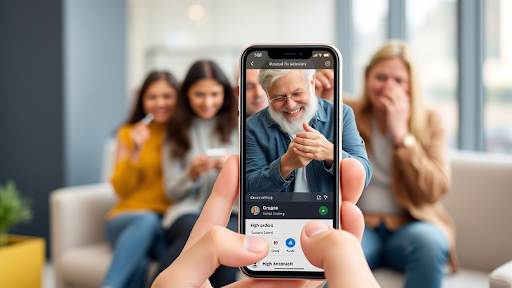The Importance of Accessibility in Mobile App Development
In today’s digital landscape, mobile apps have become an integral part of our daily lives. However, for people with disabilities, using these apps can be a daunting task. This is where accessibility testing comes into play. By incorporating accessibility features into mobile app development, developers can ensure that their apps are usable by everyone. regardless of their abilities. In this blog post, we will explore the importance of accessibility in mobile app development and provide a comprehensive guide to accessibility testing.
Accessibility is not just a moral imperative; it’s also a legal requirement. Many countries have laws and regulations that mandate accessibility in digital products. For instance, the Americans with Disabilities Act (ADA) in the United States requires that digital products, including mobile apps, be accessible to people with disabilities. Similarly, the European Union’s Accessibility Act sets out accessibility requirements for digital products, including mobile apps.
Understanding Accessibility Testing
Accessibility testing is the process of evaluating a mobile app’s usability for people with disabilities. It involves testing the app’s user interface, features, and functionality to ensure that they can be used by everyone, including people with visual, auditory, motor, or cognitive disabilities. Accessibility testing is crucial in identifying accessibility issues and ensuring that the app is usable by the widest possible audience.
There are several types of accessibility testing, including automated testing, manual testing, and user testing. Automated testing involves using tools to identify accessibility issues, while manual testing involves human testers evaluating the app’s accessibility. User testing, on the other hand, involves testing the app with real users with disabilities to identify accessibility issues that may not be caught through automated or manual testing.
Benefits of Accessibility Testing
Accessibility testing offers numerous benefits, including increased user engagement, improved user experience, and enhanced brand reputation. When an app is accessible, it can be used by a wider audience, including people with disabilities. This can lead to increased user engagement, as users are more likely to use an app that is easy to use and navigate.
Moreover, accessibility testing can improve the overall user experience of an app. By identifying and fixing accessibility issues, developers can create an app that is more intuitive and easier to use for all users. This can lead to positive reviews, increased user retention, and improved brand reputation.
:Accessibility Guidelines and Standards
There are several accessibility guidelines and standards that developers can follow to ensure that their apps are accessible. The Web Content Accessibility Guidelines (WCAG 2.1) are widely recognized as the standard for accessibility guidelines. These guidelines provide a comprehensive framework for ensuring that digital products, including mobile apps, are accessible.
In addition to WCAG 2.1, there are several other accessibility guidelines and standards that developers can follow. For instance, the Americans with Disabilities Act (ADA) Standards for Accessible Design provides guidelines for ensuring that digital products are accessible to people with disabilities.
Tools for Accessibility Testing
There are several tools available for accessibility testing, including automated testing tools, manual testing tools, and user testing tools. Automated testing tools, such as Accessibility Scanner, can help identify accessibility issues, such as missing alt text or inadequate color contrast.
Manual testing tools, such as Accessibility Inspector, can help developers evaluate the accessibility of their app’s user interface and features. User testing tools, such as UserTesting, can help developers test their app with real users with disabilities.
Best Practices for Accessibility Testing
There are several best practices that developers can follow to ensure that their apps are accessible. One best practice is to involve users with disabilities in the testing process. This can help identify accessibility issues that may not be caught through automated or manual testing.
Another best practice is to test for accessibility throughout the development process. This can help identify accessibility issues early on, reducing the cost and complexity of fixing them later.
Implementing Accessibility Features in Mobile Apps
Implementing accessibility features in mobile apps can be a complex process. However, there are several steps that developers can take to ensure that their apps are accessible. One step is to use accessible UI components, such as buttons and labels, that can be used by screen readers.
Another step is to provide alternative text for images and other visual elements. This can help users with visual disabilities understand the content of the app. Developers can also implement accessibility features, such as text-to-speech functionality, to enhance the user experience.
Flutter App Development and Accessibility
Flutter is a popular framework for mobile app development, and it provides several features and tools for ensuring accessibility. Flutter app development services can help developers create apps that are accessible to everyone, including people with disabilities.
Flutter provides several accessibility features, including screen reader support and high contrast theme. Developers can also use Flutter’s accessibility API to implement custom accessibility features.
Conclusion
Accessibility testing is a crucial step in mobile app development. By incorporating accessibility features into mobile apps, developers can ensure that their apps are usable by everyone, regardless of their abilities. By following accessibility guidelines and standards, using accessibility testing tools, and implementing accessibility features, developers can create apps that are accessible to the widest possible audience.


